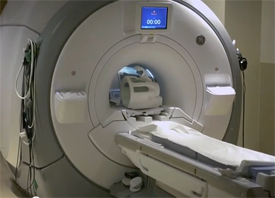 Imaging tests take pictures of places inside the body to see if there is a tumor or infection present. There are various ways to capture images of the inside of a patient’s body, from using sound waves to x-rays to radioactive dyes. These tests do not generally cause pain. Imaging tests include x-rays, CT scans, MRIs, echocardiograms, PET scans and ultrasound.
Imaging tests take pictures of places inside the body to see if there is a tumor or infection present. There are various ways to capture images of the inside of a patient’s body, from using sound waves to x-rays to radioactive dyes. These tests do not generally cause pain. Imaging tests include x-rays, CT scans, MRIs, echocardiograms, PET scans and ultrasound.
While many imaging tests use some form of radiation, it is hard to estimate the doses for different exams.
We all are exposed to small amounts of radiation daily from soil, rocks, building materials, air, water, and cosmic radiation. This is called naturally occurring background radiation. The amount we are exposed to depends on where we live. For example, people living in the high mountains of Colorado are exposed to more cosmic radiation than people who live at sea level. Radiation can be measured in many ways. Measurements can be used to estimate the radiation dose deposited in the whole body or to an individual organ. Because every patient is different in size and shape, different X-ray settings must be used to accommodate for these differences. Estimating doses for even the same type of study can be misleading and comparing estimated doses for different exams is confusing.
-Taken from the Alliance for Radiation Safety in Pediatric Imaging’s brochure “What Parents Should Know about Medical Radiation Safety.”
For more information about radiation safety in pediatric imaging, go to imagegently.org.
Performing the Tests
- Your child will need to lie still during most imaging tests.
- It may take up to an hour to take the pictures.
- Some children may need sedation (medicine that makes you sleepy) to be able to lie still for the whole test.
- Some children feel closed-in by the scanning equipment.
- Some machines make noises that can frighten children.
- Ask if your child can bring a favorite toy for the test.
- Sometimes children can bring their own music to listen to.
